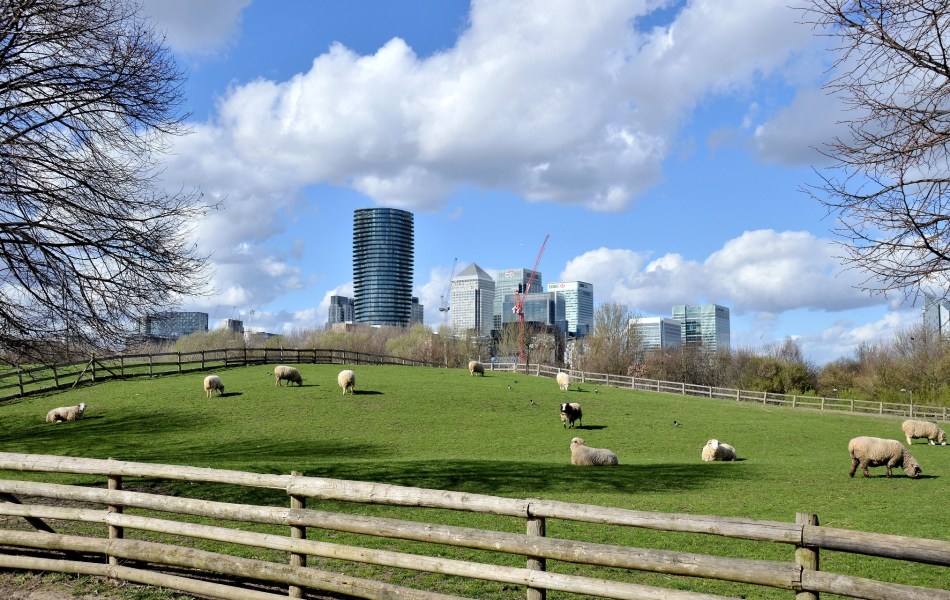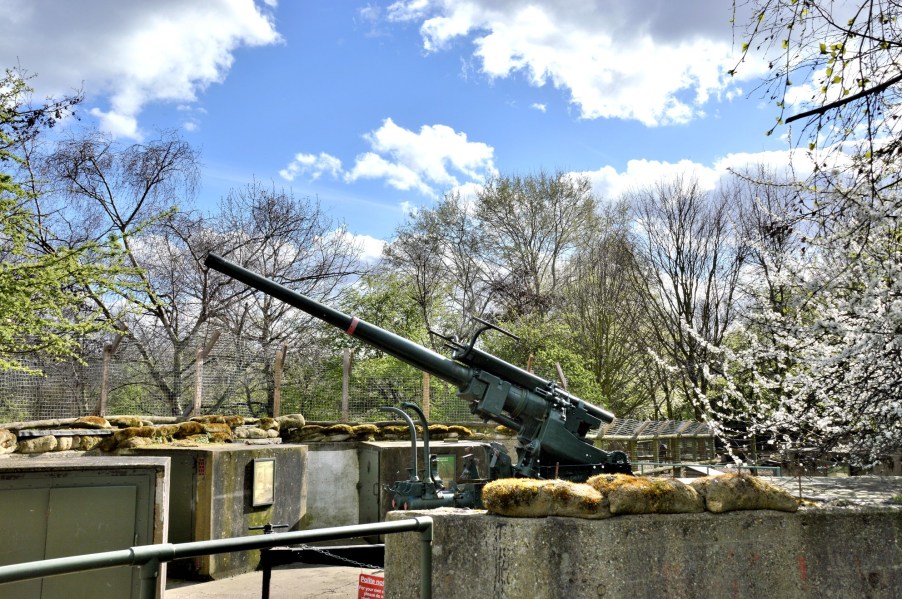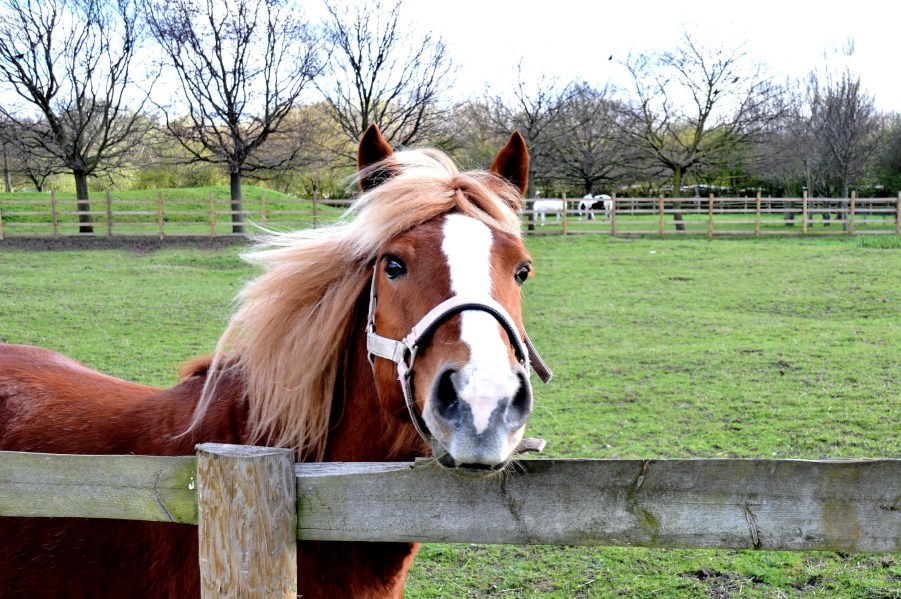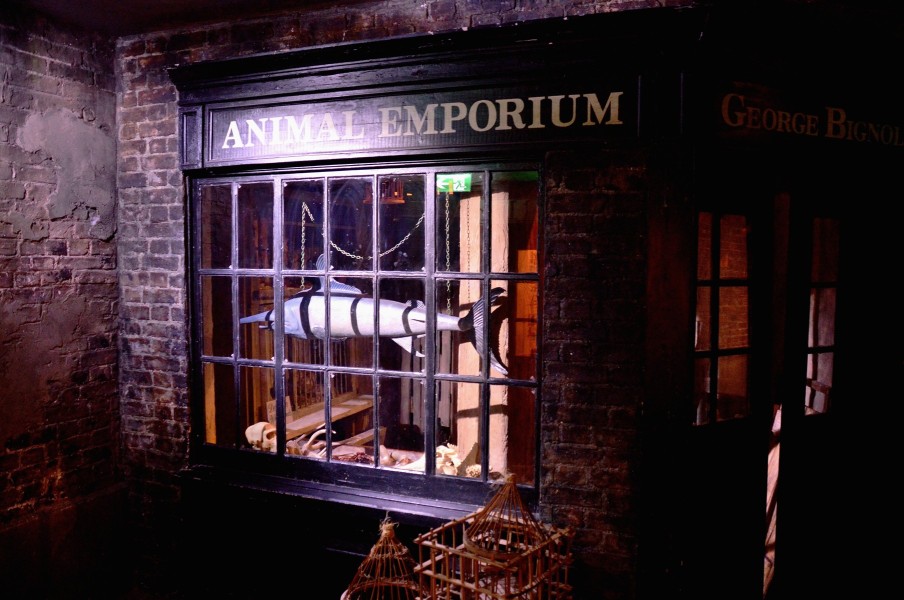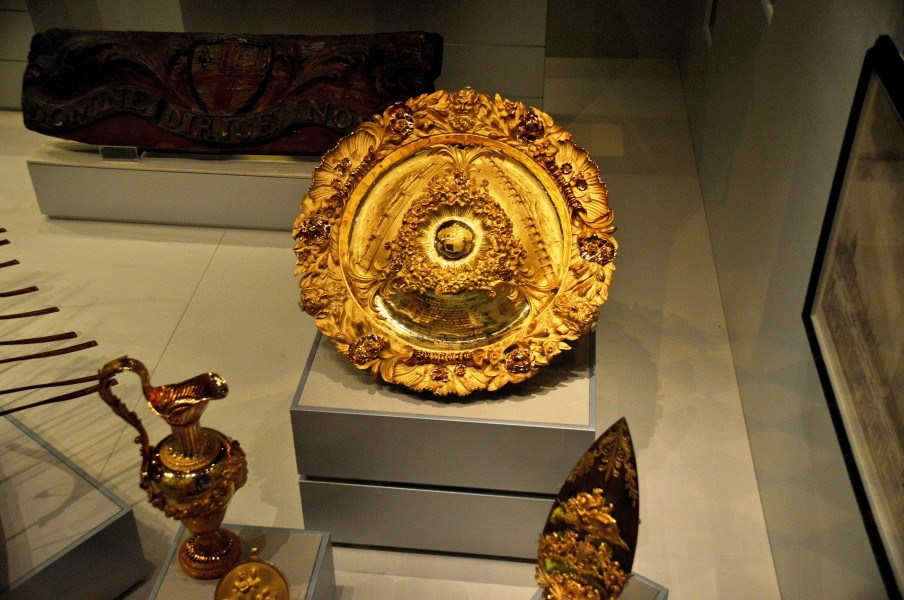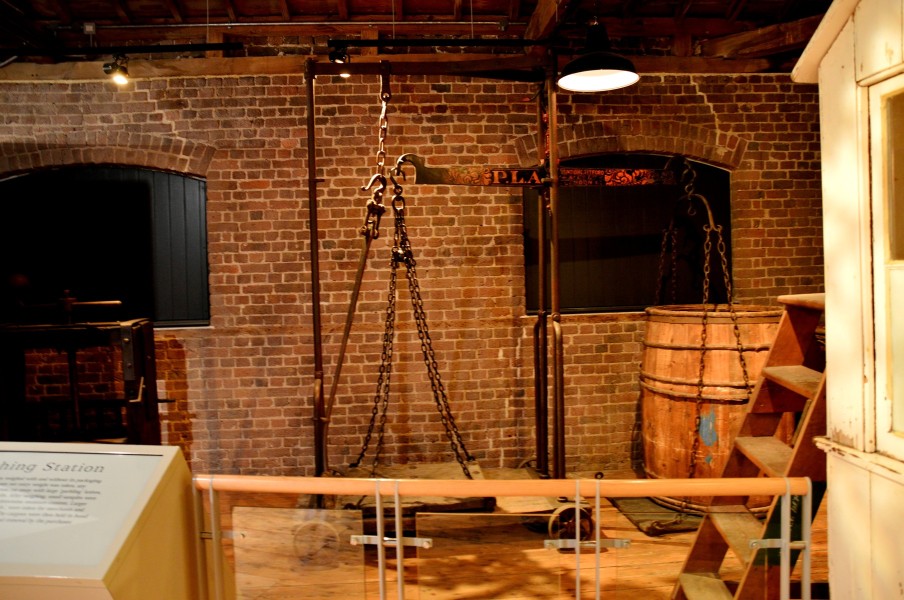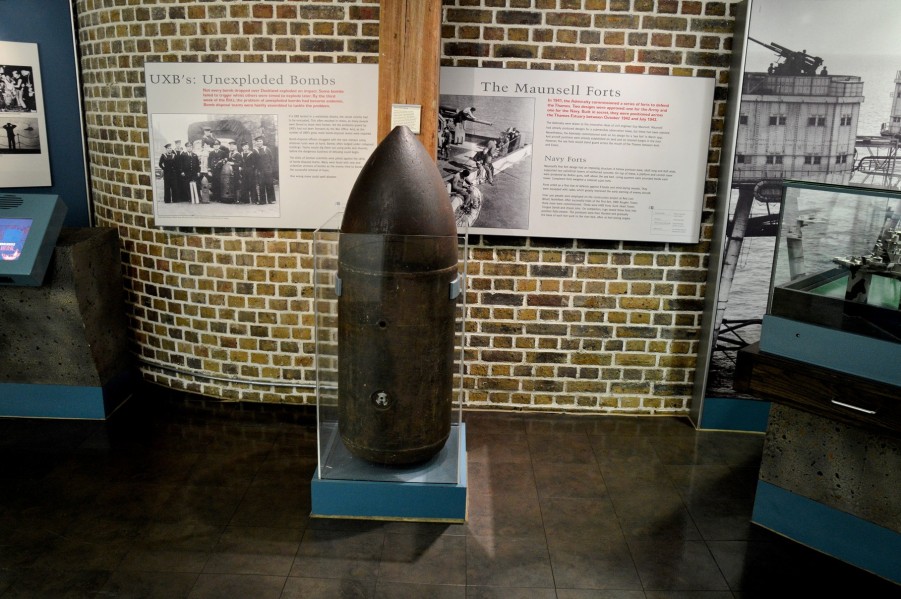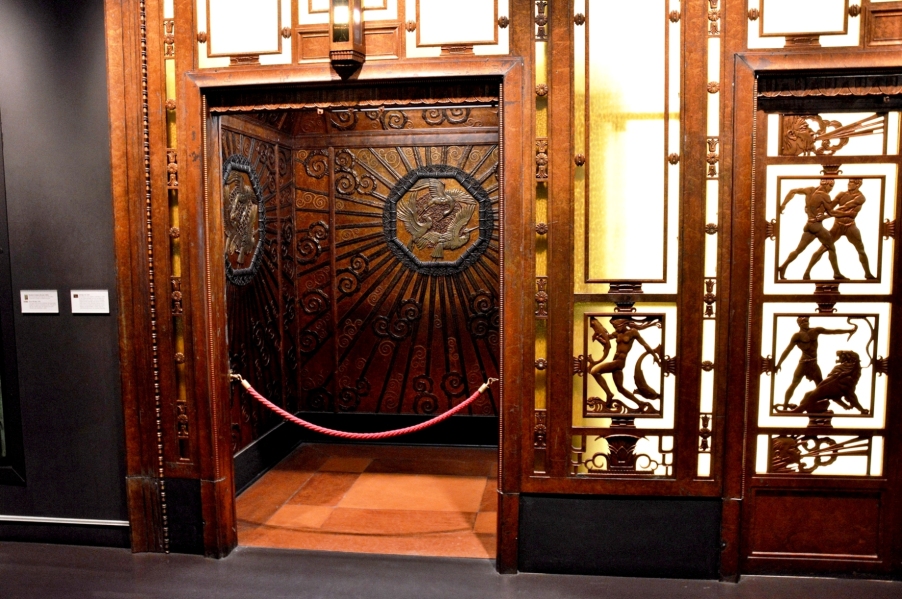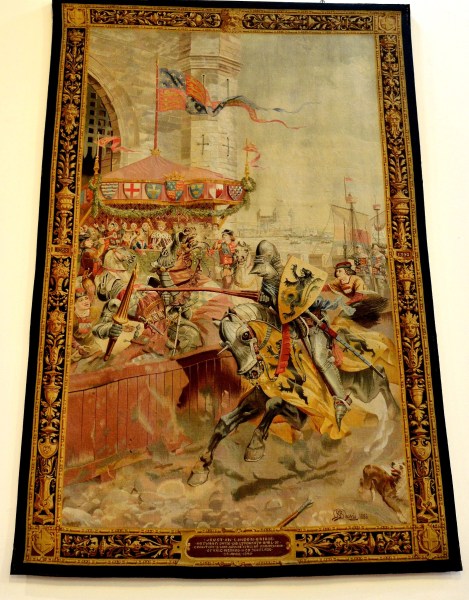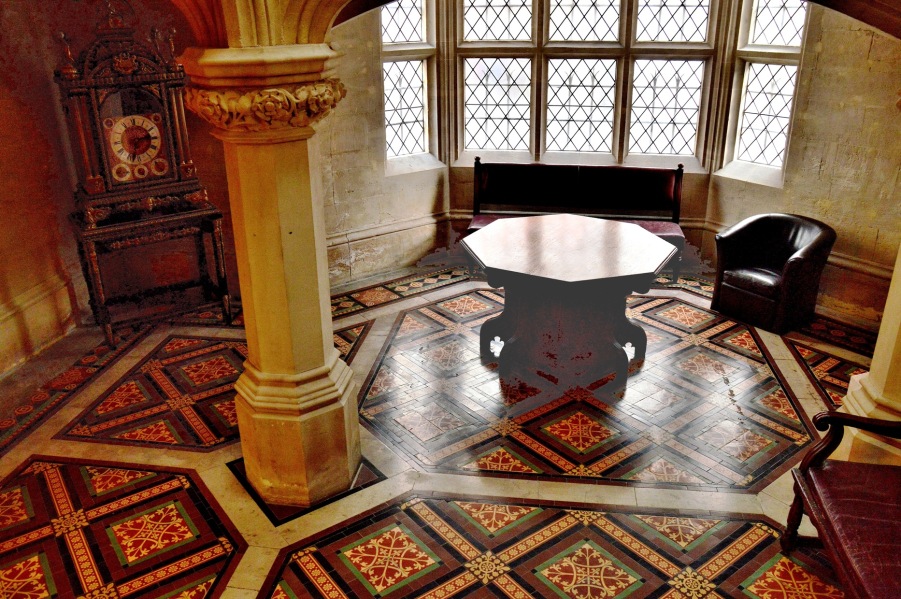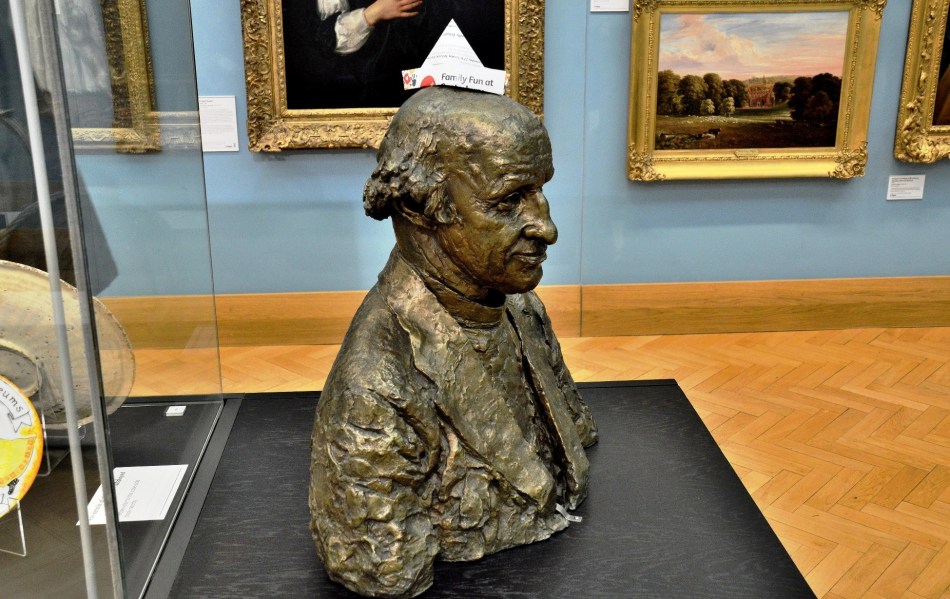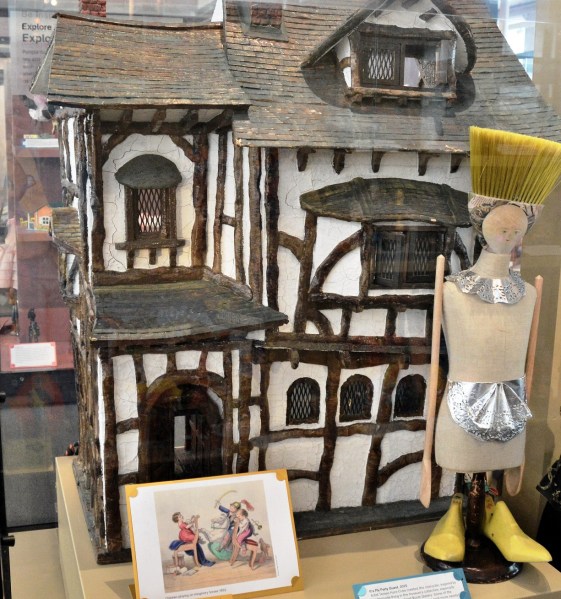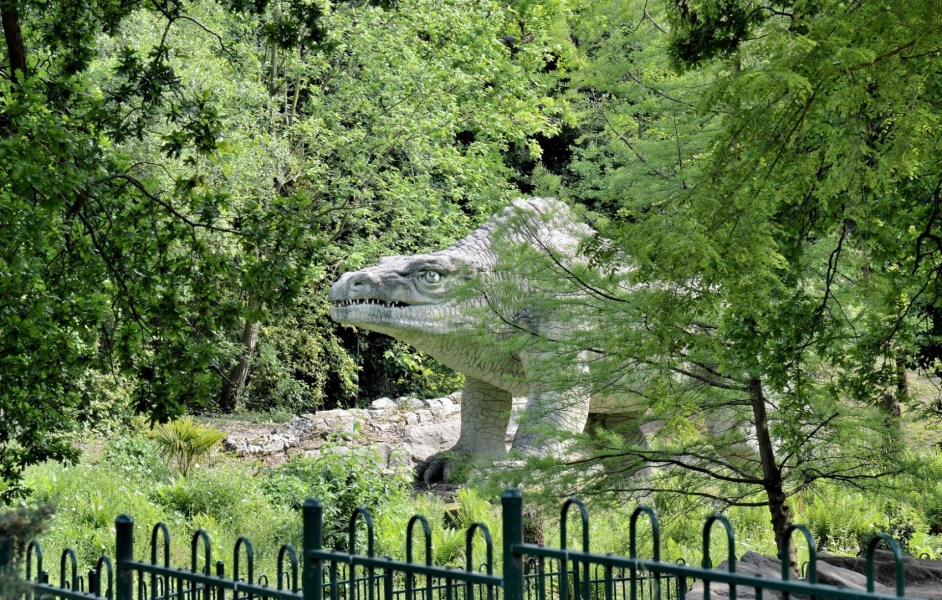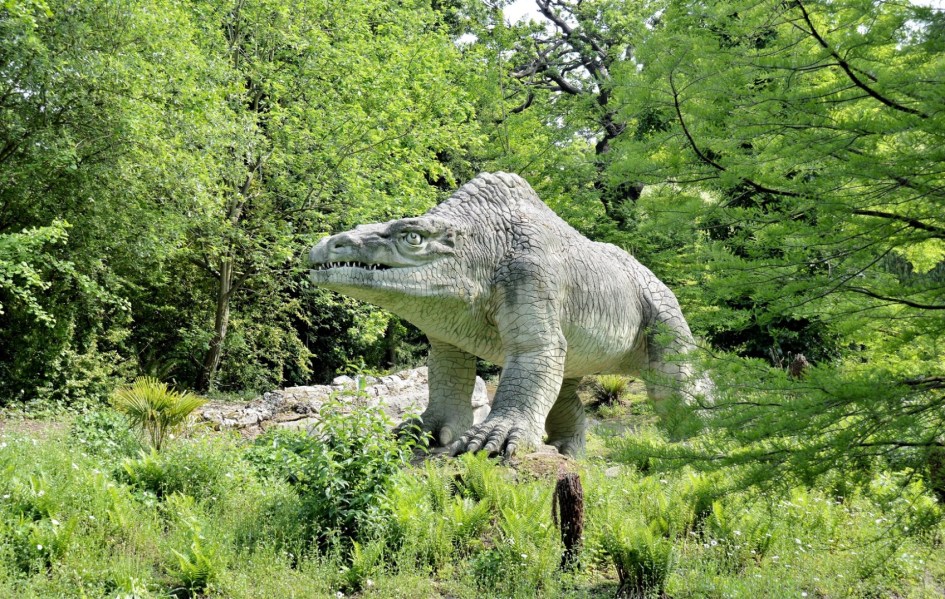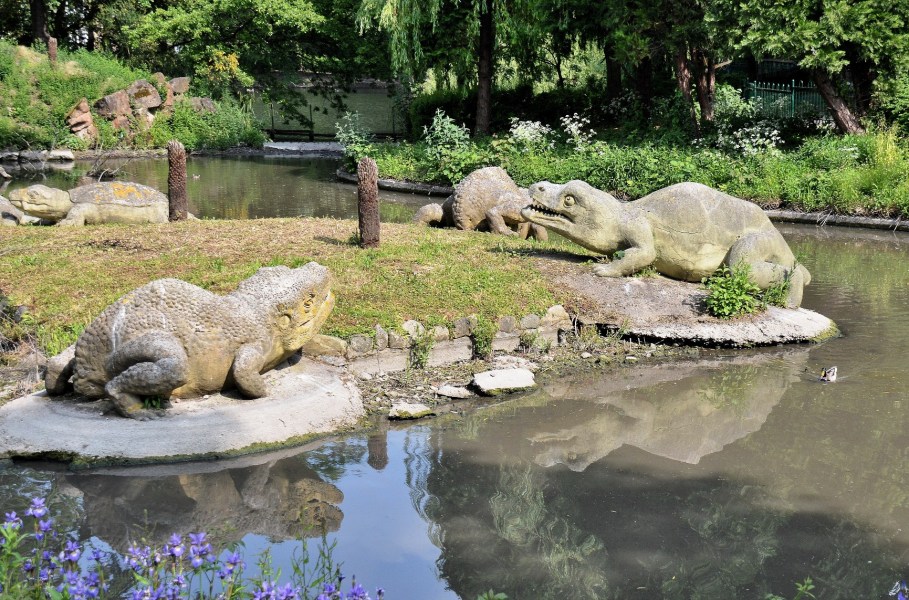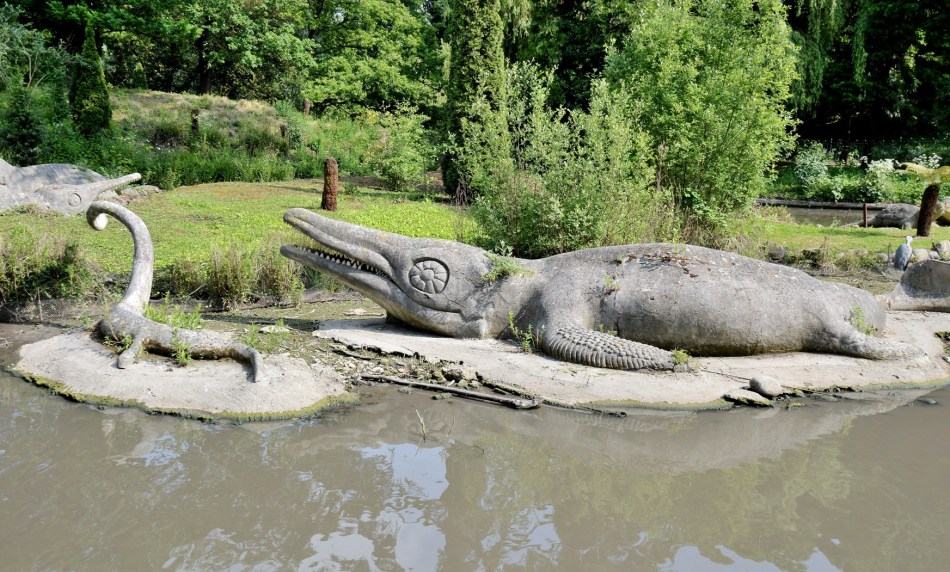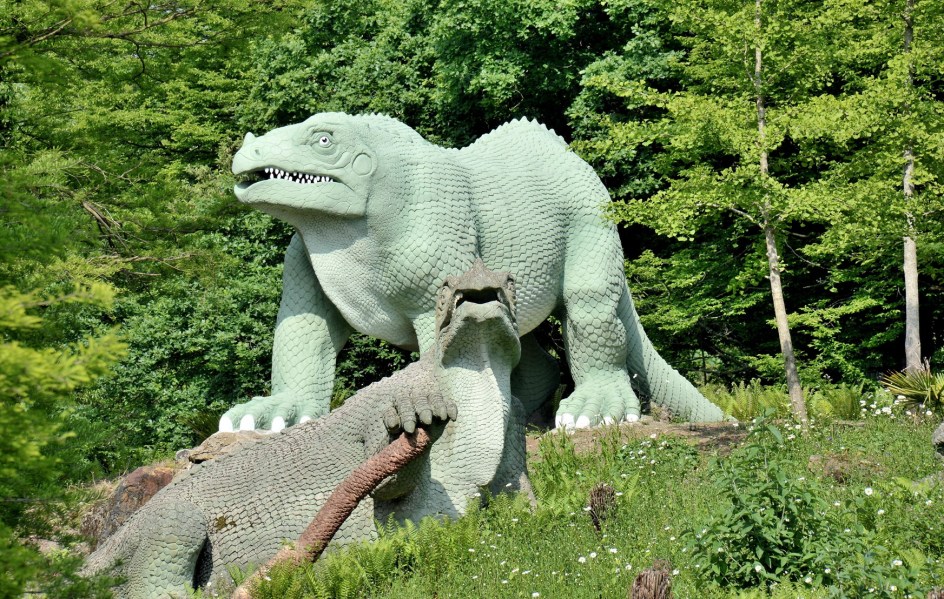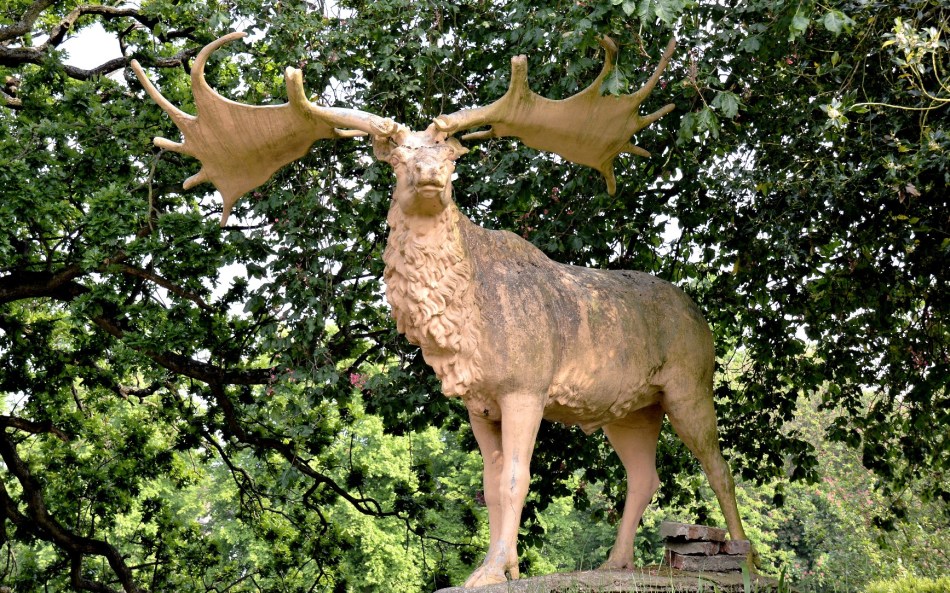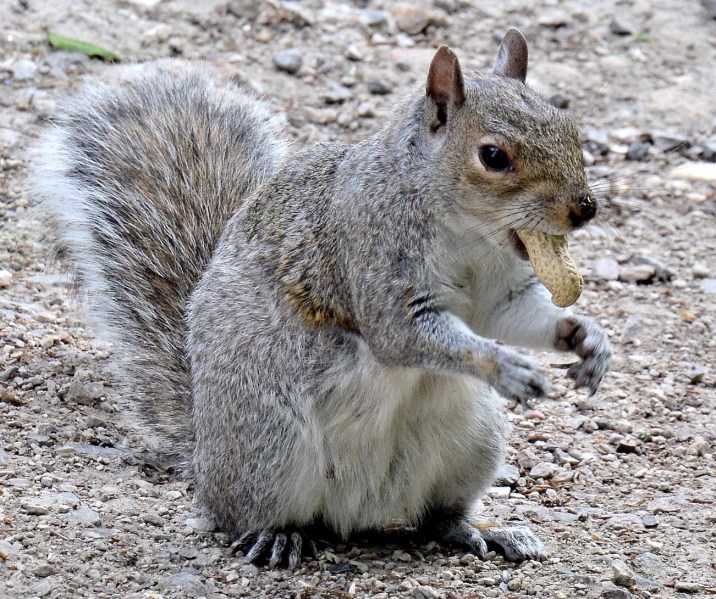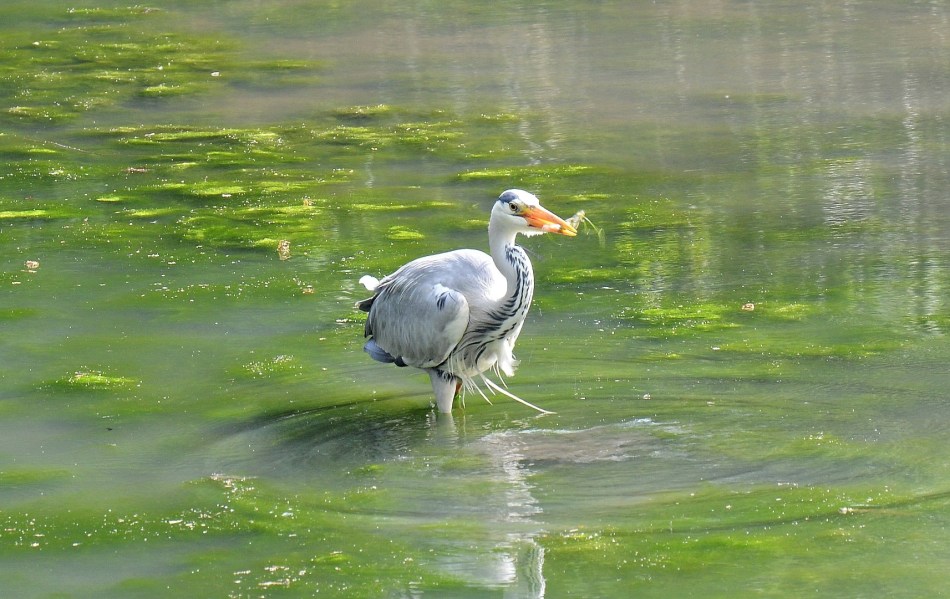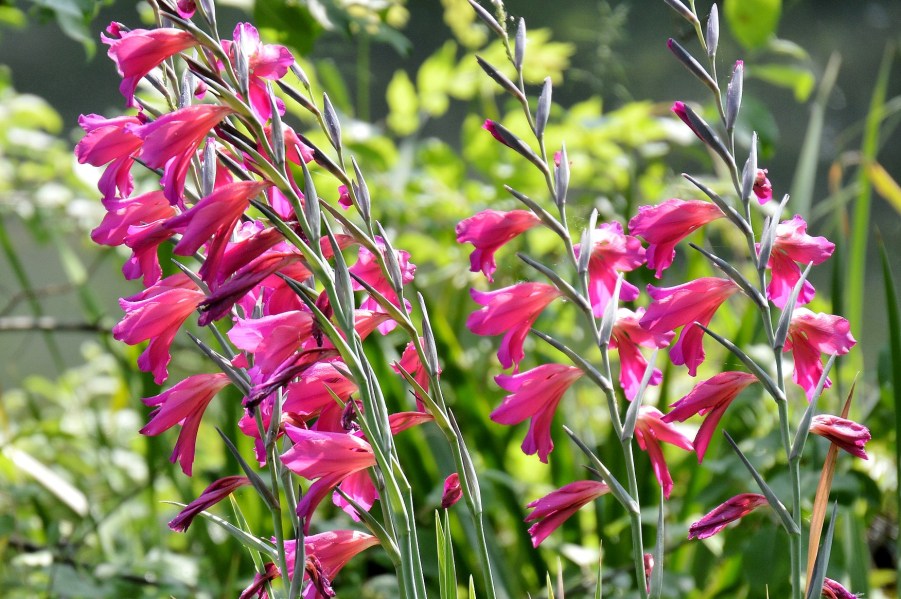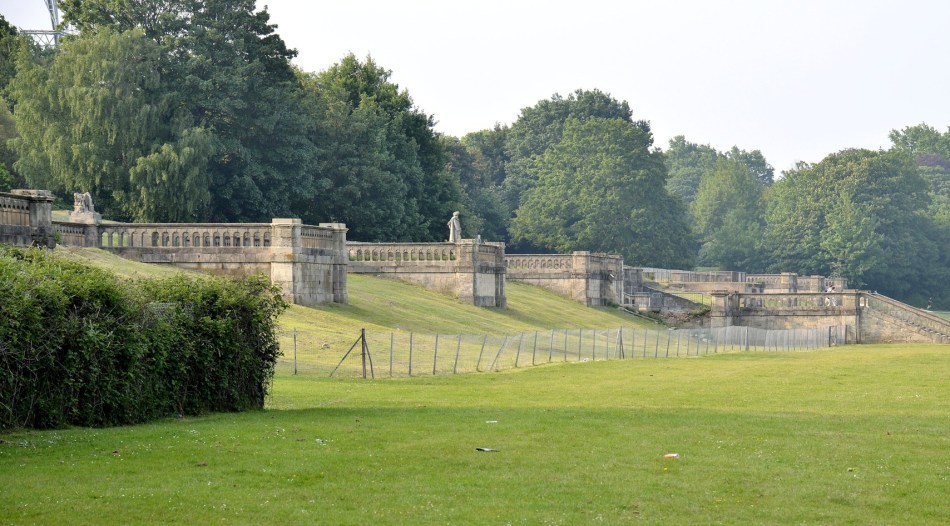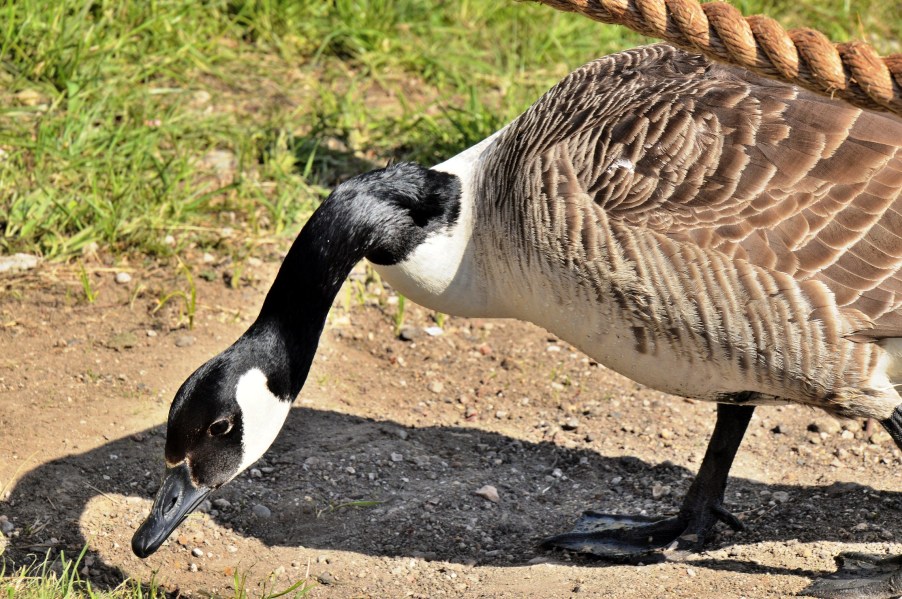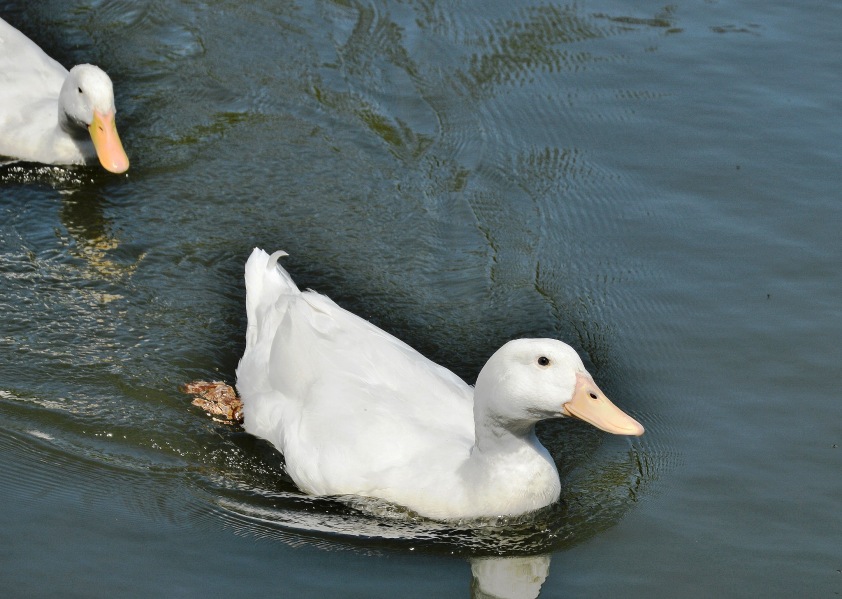About Picture this UK
Picture this UK (picturethisuk.org) Contains:- Best Places to Photograph in London, Best Places to Photograph near London, Best Places to Visit in London, Best Places to Visit near London, Best places to see in London and 100 + places to visit in London. Both inside and out.
Please click on the ⇒Gallery⇐ for more
Lloyd Park, Walthamstow and a Mystery Tune
Lloyd Park is right behind the William Morris Gallery ⇐ which has a some outstanding exhibits. Lloyd Park ⇒ has some pleasant lawns amongst trees and is surrounded by a very pretty moat. Further down there is a quite beautiful mystery tune but I have no idea who created it. First the moat.
At the far end is the Delice café and some more park with an art gallery (next time). Meantime more of the moat.
Add a little whimsy and the mystery tune.
This tune has been passed around for years but nobody knows who created it or where it came from. So, if anybody can identify it, I would be grateful. Meantime it is beautiful, calming and very suited to the pictures.
And, back to reality, perhaps. 🙂
William Morris Gallery, Walthamstow
William Morris (1834 to 1896) ⇒ was a writer, illustrator, textile/wallpaper designer, a social activist and founder of the Kelmscott Press. He had a considerable influence upon design during and after the Victorian period and was a close associate of Rossetti, Webb, Ruskin and Burne-Jones.
The gallery is free to enter and contains additional works by Burne-Jones. It is not a huge collection but there is a lot of educational material and some artifacts with a real wow factor. In addition the gallery provides an online collection, exhibitions (Mary Morris from October 2017 to January 2018), workshops and masterclasses. Please see the gallery website ⇒ . The easiest way to get to the gallery is at the bottom of this page.
More of William Morris can be found at the Red House ⇐ in Bexleheath (south-east of London) where he founded the decorative arts company, Morris, Marshal & Faulkner & Co which included wives and other family members.
The above wallpaper was for Queen Victoria and required 66 separate woodcuts (that’s how it was done) for each section.
The stained glass is by Edward Burne-Jones
For a closer look please right-click on the image, select “open in a new tab” and then left click in the tab/image to enlarge.
Ruskin advised aspiring artists to copy a work by Albert Dürer “until you can’t look at anything else”. William Morris and Edward Burne-Jones spent hours with the above Knight, Death and the Devil.
.
The easiest way to get to the gallery is by traveling to Tottenham Hale Rail Station (or Blackhorse Road Staion) and then take the number 123 bus which stops right outside the gallery pictured below.
Behind the gallery is the gallery garden and further on is the very pretty Lloyd Park ⇐. Together with the free gallery it makes a very pleasant day out. 🙂
Crossrail Place Roof Garden
Slightly to the east of central London there is the the high rise complex of Canary Wharf. Amongst the tall buildings there is the new roof garden of Cross Rail Place beside West India Quays station on the Docklands Light Railway. The garden is only a short distance from the Museum of London Docklands⇐ (not to be confused with the larger Museum of London ⇐).
The garden is quite new and doesn’t have a lot of colour yet but is a pleasant place for a short stroll or just quietly sit.
There are two piano’s for anybodies use.
A view of the rood garden on top of an area of shoperies and eateries as seen from West India Quays station. The building in the distance isn’t really leaning to one side, it’s just a peculiar perspective. 🙂
Canal Boat Cavalcade 2017 at Little Venice
There is a pool at the junction of the Regents Canal and Grand Union Canal that is now known as Little Venice. Every year there is a Festival and Cavalcade of canal boats. Some have traveled hundreds of miles using the vast network of canals that were once the lifeblood of Britain’s trade and industry.
There is a pleasant waterbus ⇐ between Camden Lock and Little Venice. At Little Venice there is a floating café and an enchanting puppet theatre ⇒ for all ages.
Canal boats became ornamental even as working boats.
A Small Sample of the Cavalcade
Some of the Characters
The ugly duckling.
“One likes to be a good sport, but if one more reveler refers to me as loofah neck I shall scream”.
Peckham Rye Park and Flowers
From stop V across the road from Peckham Rye rail station the numbers 63 and 363 buses travel south along the west side of Peckham Rye Park. About half way along the park’s length is the easiest way to it’s centre where all the trees are. The Café on The Rye is to the left by the car park, whilst straight on is :-
Peckham Rye Park Japanese Gardens
and :-
Sexby Gardens
If this is early April then summer must be amazing
and :-
Peckham Rye Park Lake
The lake is at the east side of the park and is a short distance to Nunhead Cemetery ⇒, but it is uphill so please see the directions ⇐ for a bus route.

St Augustine’s, One Tree Hill and the Oak of Honor
One Tree Hill is named after the Oak of Honor ⇒ and is a small nature reserve with St Augustine’s Church, the oak and a fine view across London.
The easiest way to get to One Tree hill and St Augustine’s is by the P12 bus from Honor Oak Park rail station to the top of the hill by road. There is a path on the opposite side of the road which passes the Maha Lakshmi Vidya Bhavan.
There is an alternative route via Peckham Rye Park and Nunhead Cemtery here ⇐.
The path leads first to :-
St Augustine’s Church
The church was built between 1870 and 1900 and has some fine architecture and stained glass. It is open in the afternoon during the summer months and is always open on a Saturday morning. More ⇒. Please check the website for services and events before you visit.
St Augustine ⇒ (354 AD to 430 AD) was an early Christian theologian and philosopher.
These walls aren’t really speckled. The effect is the consequence of an unusual mix of ambient light and a high ISO camera setting necessary for the dark alcove without flash. I thought it was a pleasing effect so I left it in.
One Tree Hill
On retracing one’s footsteps there is a set of steps leading to the top of the hill and the Oak of Honor.
If you think I’m climbing up there just to get a few photographs, then you must be ~
what ! no, stop that, get off.
Pesky elves. I wish they wouldn’t do that.
Oh well, since I’m here.
The Oak of Honor
This Oak of Honor ⇒ was planted in 1905 and is the third on that site. The original oak marked the southern boundary of a region known as the Norman Honor of Gloucester ⇒ which began its existence in 1166.
Legend has it that Queen Elizabeth I took rest under an oak on the hill when she went a-maying in 1602. Alternatively she had a picnic with Sir Richard Bulkeley on 1st of May. A-maying could have a variety of meanings including being quite frolicsome. 🙂
As an aside: The spelling of Honor, rather than the usual English spelling of Honour, derives from the antiquity of the place. Early English favored “or” rather than “our” for many words. These earlier spelling were transported to the Americas and remain in use. England seems to have developed and favoured the alternatives due to a continued influx of languages.
Near to the oak is a fine view across London from One Tree Hill’s southern position.
The oak and view are at position 1 on the map. To enlarge the map please click on and then gain to magnify.
The park proceeds down the far side of the hill to Brenchley Gardens where one can board the P12 bus again. The bus can be used to go back to Honor Oak Park rail station (traveling West and then back up the hill) or the other way to Nunhead Cemetery or Peckham Rye Park (later posts).
Thank you for visiting and I hope you enjoyed the tour.

Mudchute London City Farm
Mudchute London City Farm ⇒. “Set in 32 acres of countryside in the heart of East London, the Mudchute is a community charity, with a working farm, stables, a children’s nursery and a wide range of education activities. We are open every day, free of charge”. There are also miniature ponies, goats, lamas, alpacas, donkeys, ducks, geese, sheep, a pets corner, a small aviary, a nature trail, a shop/café and a restored WWII ack-ack gun.
The area originally acquired its name from being a dumping ground for the mud/silt being dredged from the Millwall Docks during the 1800’s. History ⇒.
I started from the Pier Street entrance/exit and only had enough time to photograph some of it.
The farm is very child friendly. Whilst there I saw some little ones, with spades taller than themselves, cheerfully moving earth from one place to another.
The top of the fence is open but it keeps out the foxes and the farm’s cat who, of course, thinks he owns the place.
The farm is just a little south of the greatly regenerated London Docklands.
“Well hello, good evening and welcome”
Some breeds of ewes have horns. I think that these are a mix of Jacob sheep and White Face Woodland sheep.
At first they were very interested in visitors, but it didn’t last long. Loss of interest was quickly followed by a lot of very loud baaing. I finally realised that nibbles, bought from the shop, were expected .
“Nibbles ?”
“Baaaa. This one ain’t got no nibbles, Baaa”. “Baaa, you tell ‘im Agnes”. “Yeaaah baaa, can’t come around ‘ere with no nibbles, the cheek of it, baaa”.
“I’ve had my nibbles and I’ve got a rhythm stick”
Fearing the firing squad, I departed.
These are either llamas or alpacas. I’ll avoid the obvious joke of not wanting to stick my neck out on that.
“Just having lunch at the moment”.
“Oh yummy the gourmet table”.
“Carrot, what carrot !”.
From the other side of the farm looking south. There is an exit/entrance near here to Mudchute Docklands Light Railway (DLR) station.
I hope enjoyed your visit.
In East London there is also Hackney City Farm ⇒ and Spitalfields City Farm ⇒.
Westminster Cathedral
Westminster Cathedral (Wiki) ⇒ was built in the Byzantine style and completed in 1903. It is free to enter and photography is allowed, although perhaps best to avoid when used for Mass ⇒. The Cathedral is on Victoria Street, very near to London’s Victoria Station.
Westminster Cathedral should not be confused with Westminster Abbey ⇒ which is much older (1089 AD). The Abbey is worth seeing but does charge for entry and does not allow photography.
The lower part of the Cathedral is very ornate but the upper ceiling and walls are bare dark brick. I found it best not to look.
There is a small museum of religious regalia and a lift up the tower to a viewing platform. There is a small charge for each of these extras, paid for at the Cathedral shop.

Inside Westminster Cathedral
Westminster Cathedral Museum
Westminster Cathedral View from the Tower
There are views in every direction from the tower. I thought this one, to the East, was the best. One can see the Palace of Westminster ⇐ in the centre and just beyond is the Shard of Glass. There is a tremendous view from the top of The Shard ⇒ but they do charge (it is worth looking for the online and half-day saver tickets).
Westminster Abbey (the white building with two towers) is just to the left of the tallest crane. The tall brown building is Transport for London which is not presently open to the public (information thanks to comments by Simon J Kyte).

Spring 2017 with Squirrels and Flowers and Song
And here at the Squirrel Olympics in Tower Hamlets Cemetery Park, Bobtail makes his final slalom run of the day. He’s going well and it looks like it’s going to be a record.
And the crowd are going wild. They’ve never seen anything like this and it’s absolute bedlam here.

They’ve lost control and applauding like crazy.

And the stamens are out of their seats.

The Windflowers are all of a flutter.

The Poppy Anemones are popping

All the other Anemones are all anemoning

And the umpire has had enough and run up a tree. 😀
The band is restoring some calm with some cool music and encouragement to go for a walk with a little swing in your step.
.. or spring.
More Tower Hamlets Cemetery Park ⇐ (with a fox).
Museum of the Order of St John
The Order of St John (St John’s Ambulance Brigade) was founded in 1099 and is an international organisation. The museum is on St John’s Lane which is off Clerkenwell Road. That part which is frequently open, is not very big but packed with educational placards and video.
On a tour day there is additional access to upstairs rooms and artifacts, see the website ⇒. Further down this page there is a virtual tour of the upstairs rooms and a video about the Order of St Johns and St John’s Ambulance Brigade .
The short history is concise and well presented.
Please see the website ⇒ for tour days and use the contact details to determine if photography is allowed on tours.
There is no sound with the virtual tour.
Museum of London Docklands
14 pics. The Museum of London Docklands ⇒ is in the Docklands region (nearest rail being West India Quay on the Docklands Light Railway) and is all about the history of the Docklands as distinct from the more extensive history of London at the Museum of London ⇐ at 150 London Wall.
The Museum of London Docklands is full of historical information, is free to enter and non-commercial photography is allowed.
There is a lift that goes to the top floor, which is a good place to start. I do prefer stairs that go down.
The Sailors Walk
.
.
.
More Exhibits
.
In Commemoration of the Great Strike Sept 1889 ⇒.
.
For a closer look of the history please click on the image and then again to enlarge.
There is an extensive area covering the war years during which the docks were a prime target..
.
London Docklands Now
.
For more of the Past That Made the Present there is Wheels on Fire ⇐, a timeline at the Science Museum ⇐ and the History of Navigation ⇐.

Museum of London
34 pics. The Museum of London ⇒ is at 150 London Wall (as distinct from the Museum of: London Docklands ⇐). Inside is a quite extensive and interesting museum with a timeline that begins on the top floor, from prehistoric times to present day. The museum is free to enter and non-commercial photography is allowed.
The museum is a short walk along St Martin’s Le Grand from St Paul’s underground rail station (central Line) .
Educational sessions, including those for young students, are available.
There are a large number of prehistoric, bronze age, pre-Roman, Roman, post-Roman (Saxon) and Norman exhibits. Alongside are a number of educational placards and films. Too many items to show here and get to the exhibitions of later London. So, here is just a taste of early times.
.
.
 When the Romans finally left, about 400 AD, England was mostly populated by Saxon settlers and invading Norseman/Danes (Vikings) in the north. The Saxons were weren’t necessarily all that war-like but spent most of their time farming. The Norseman were commonly seafaring traders, it is just that some of them were a bit cantankerous.
When the Romans finally left, about 400 AD, England was mostly populated by Saxon settlers and invading Norseman/Danes (Vikings) in the north. The Saxons were weren’t necessarily all that war-like but spent most of their time farming. The Norseman were commonly seafaring traders, it is just that some of them were a bit cantankerous.
On the other hand (imported from Waltham Abbey and King Harold’s Day ⇐ ) :-

 In 954 Alfred (the Great) became the first King of All England. By 6th January 1066 the position was taken up by Harold Goodwinson (Harold II). On 25th September 1066 Harold Goodwinson defeated the viking forces of Harald Hadrada and Tostig at Stamford Bridge in the north. Harold was then faced with a forced march of 241 miles to fend of the Norman invader, William (the Conqueror), in the south. By October 14th the Saxon forces were defeated and Harold killed. Thus began the Norman era and thence the reign of the Plantagenets and then the Tudors.
In 954 Alfred (the Great) became the first King of All England. By 6th January 1066 the position was taken up by Harold Goodwinson (Harold II). On 25th September 1066 Harold Goodwinson defeated the viking forces of Harald Hadrada and Tostig at Stamford Bridge in the north. Harold was then faced with a forced march of 241 miles to fend of the Norman invader, William (the Conqueror), in the south. By October 14th the Saxon forces were defeated and Harold killed. Thus began the Norman era and thence the reign of the Plantagenets and then the Tudors.
Within the old city walls, William the Conqueror should only be referred to as William. This is because he did not conquer London but instead gave it a charter.
To see the timeline click-on and then again to magnify. It surprised me to note that our Magna Carta (in 1215 a limited Bill of Rights) was signed at roughly the same time as Genghis Khan conquered Persia.
.
Between 1558 and 1603 was the great boom of wealth, culture and global influence of the Elizabethan era. The effect continued for some time after.
Sorry about the glare, I couldn’t find a way around it.
Britain and particularly London continued to advance in wealth and prestige :-
.
.
– although not for all:-
– for some there was debtor’s prison. For others there was stark poverty, starvation, disease with the work house as the only relief in later times. There is the Industrial Revolution and it’s long term impact at the London Science Museum⇐ and Wheels on Fire ⇐ (the struggle for fair play).
The Victorian Walk
This is a fascinating walk into the past, complete with atmospheric background sounds.
.
.
.
.
The 1920’s boom
.
.
At the mini cinema you can take a seat and watch an old newsreel.
But then there was the 1930’s depression, and then :-.
.
.
London and Britain itself were almost destroyed. It needed the backing (and loss) of Britain’s entire empire, with considerable determination and sacrifice to hold on. That effort stopped Hitler’s progress and provided a foot-hold for the USA to join us in the liberation of Europe. If Britain had not been able to provide that foot-hold, the consequences could have been very different
At the end of WWII, Britain was in dire straits. Rationing continued until 1953, eight years after the wars end. Austerity continued until the early 1960’s
Then things began to pick up. 6D is six old pence (when they were 240 to a UK pound).
Then London began to swing again with a great burst of original art, music and cultural evolution. Not just in London but all over Britain. We may not be so bright at the present but:-.
For more of the Past That Made the Present there is Wheels on Fire ⇐, a timeline at the Science Museum ⇐ and the History of Navigation ⇐.

Guildhall Art gallery and Roman Amphitheater in London
The Guildhall Art Gallery ⇒ is free to enter and is right beside Guildhall ⇐ . Beneath are the remains of a Roman Amphitheater (AD 70) made more atmospheric by illuminated competitors. The gallery houses a moderate size collection of quite impressive art including some pre-Raphaelite works.
.
.
.
.
The painting is so large that it occupies two floors. I’m sure that’s Stephen Fry on the horse.
.
.
.
.
Inspired by a tragic poem with the same title by Coventry Patmore.

Guildhall in London
12 pics. London’s Guildhall was built between 1411 and 1440. It can be found near Bank Underground Rail station, just off Gresham Street. History ⇒. Right beside Guildhall is the Guildhall Art Gallery ⇐ which includes the remains of a Roman amphitheater.
The entrance is just to the left of this picture and the art gallery to the right (another post). The building is mainly used for social functions but members of the public can view the Great Hall, when not in use. Please see the website ⇒.
In the Great Hall their are a number of statues and stone tableaus. Here are just three.
.
.
And, at the far end.
I found a small unlocked side door ( I do love an unlocked side door) and some steps leading upwards. I found myself in the Old Library.
.
.
There were a number of old paintings and some tapestries.
Another side door and some steps down ~
Leading to a a small hall.
It was here I got nabbed by security, who were confused as to how I got into the members area. I agreed with them and was politely escorted out with my badly behaved camera (well, if they will leave old libraries just lying about).
Thank you for the visit and may all your side doors be rabbit holes.

The Queen’s House Interior at Greenwich
14 pictures. The house has been refurbished and is free to visit. It can be found adjacent to the National Maritime Museum⇐ in Wonderful Greenwich ⇐. Check the Queen’s House opening times ⇒. Non-commercial photography is allowed now (since early 2016). .
The house, formerly known as Queen Anne’s house, was built between 1616 and 1635 for Queen Anne (of Denmark) wife of James I of England. Unfortunately Queen Anne died in 1619 and the house lay abandoned until work restarted in 1629 for Charles I’s consort, Henrietta Maria.
The Queens House is now full of artwork including works by William Hodges, George Stubbs, Hans Holbein, William Hogarth, Thomas Gainsborough, the Tulip Staircase by Inigo Jones and one of the famous Elizabeth I Armada portraits.
The architect was Inigo Jones and the style is said to have influenced the architecture of the USA White House.
The Architecture
.
.
.
.
The Artwork
This is just a small sample.
One of the three famous Elizabeth I Armada portraits that still exist. This one cost £1.5 million. There is another at Woburn Abbey and another at the National Portrait Gallery ⇐ (although I did not include the Armada Portrait) .
The Armada Portraits depict the destruction of the Spanish Armada whilst attempting to invade England. The armada was destroyed mostly by the British weather. Like many portraits of Elizabeth there are several symbols included. For instance the pearls indicate purity, the bow indicates virginity and her right hand over the America’s indicate her advancing dominion and colonisation.
Other portraits of Elizabeth I can be found at Hatfield House ⇐ and show an even more advanced use of symbolism.
.
.
.
.
Sir Walt founded the state of Virginia in the Americas (after Elizabeth I the virgin Queen) and brought potatoes and tobacco to Europe.
This is why the Beatles sang in “I’m so Tired”, in reference to tobacco, ” And curse Sir Walter Raleigh, he was such a stupid git”.
He secretly married a Gentlewoman of the Queen’s Privy Chamber (Elizabeth “Bess” Throckmorton) which resulted in he and his wife being imprisoned for several months. Years later, he was executed for refusing to accept James I as Queen Elizabeth’s successor.
.
.
.
Thanks for your visit and I hope that you found that interesting.
As an added note, the house does have a reputation for being haunted ⇐. To confess, it was probably me having a sick day. To be more serious, I found it a very calm place and caused no concern at all. Even the people, who took the photograph that started the rumour, refused to believe it was ghostly.

St Dunstans in the East
Along Great Tower Street, west of the Tower of London ⇐, past All Hallows by the Tower (AD 675)⇐, there is St Dunstans Hill and the church garden. The church was Originally built around 1100 AD, destroyed by the Great Fire of London (AD 1666) ⇒, rebuilt and then severely damaged during WWII. The garden is now a quiet oasis in a busy part of London.
More ⇒ and more (wiki) ⇒.
Victoria and Albert Museum of Childhood – Vintage toys
24 pics. The V & A Toy Museum is in Bethnal Green just a little north of Bethnal Green Underground station on Cambridge Heath Road. There are numerous events and workshops for children including schools groups. It is worth seeing their website ⇒.
The museum is free to enter and photography is allowed but difficult due the lighting and reflections from the glass cases. Nevertheless it is worth a visit, especially since their stock keeps being replenished from a large archive.
There is a second post with Chinese Rock Gardens, more toys and favourites from television here ⇐. 🙂
The V & A Museum of design in South Kensington is even larger and can be found here ⇐.
Dolls Houses
This just a sample.
.
Toy Cooker and Tea Sets
Toy Theatres
Mechanical Puppet
.

Johnny the Dunce is an early clockwork toy (circa 1850) with music and a swinging leg.
Vintage Models
Steam Locomotives
The first two of these models have small spirit burners underneath which raise steam and result in locomotion. A good way to set your carpet on fire.
There are more model steam engines/locomotives here ⇐.
Rocking Horse
Teddy Bears
Painting
“We used to make our own amusement in the old days”.
Crystal Palace Park and Dinosaurs
While strolling through the park one day, in the merry merry month of May (at the southern end),
I was taken by surprise, by a pair of roguish eyes,
I was scared but I didn’t run away,
.
.
.
.
:-).
“Me too”.
El Magnifico.
El Sticko.
“I keep throwing the stick but El Thicko keeps bringing it back. I hope it doesn’t start a trend”.
“Did somebody say stick”.
.
“My tongue’s thwollen”. More squirrels here⇐.
Coot Chicks more here ⇐.
This is all at the southern end of Crystal Palace Park.
Heironymous.
“Bosch, got it”.
“Come here, me little Jacky, now aw’ve smoked mi backy
Have a bit o’ cracky, till the boat comes in
Dance ti’ th’ daddy, sing ti’ th’ mammy, dance ti’ th’ daddy, my little man
You shall have a fishy on a little dishy
You shall have a fishy when the boat gets in.”
Near the café at the southern (lowest) end of the park.
This is from the northern (highest) end of the park.
.
.
The upper terraces were once the site of the Crystal Palace. Crystal (Glass) Palace was originally sited in Hyde Park and housed the Great Exhibition⇒ from 1851 to 1854 then the whole thing was moved to Penge and the Park created. The structure was burned down in 1936 but the park remains and, once a year, is used for a race of classic/vintage cars⇐.
On the upper terraces can be found four of these (two at each end). Currently being refurbished they are actually caged to prevent further attacks upon tourists. 😀
If visiting the park it makes more sense to start at the northern (high) end at or the mid area (right next to Crystal Palace station), walk down hill (for the dinosaurs and ponds) and then escape by using Penge West rail station. And, I hope you enjoy your days out.
.
New River and Woodberry Wetlands
“Well hello, welcome to the New River Walk and the recently opened Woodberry Wetland Nature Reserve”.
The river was new in 1613 when it was created to provide London with a water supply. Now it is part of the Capital Ring Walk⇒ and this is just one section. This Google map⇒ (collapse the left panel) will help and shows probably the best approach being from Manor House underground rail station through or alongside Finsbury Park to the river”.
There isn’t a lot of wildlife but it is a quite a pleasant walk and does have the occasional comedian.
“Well I’ve got the pipe now what about the slippers”.
“I find it best to look the other way”.
Eventually the river curves around (see map) to Newnton Close where one can choose to take the south path (on the left) beside the East Reservoir or continue on the north side of the river (on the right) . On the far side is a very pleasant indoor/outdoor café
You are now in the Woodberry Wetlands Nature Reserve⇒. The reserve was opened by Sir David Attenborough on 30th April 2016. A the time of writing (early May 2016) I did not see a lot of wildlife but it is early days yet and the habitat looks promising.
If you choose the river walk then, just beside the path at the far right corner, you will find Mr Toad (and Mole).
And, on the reservoir ⇓ a few clients are starting to appear.
“A bijou residence with lakeside views ! Those estate agents, really”.
“New York or bust”.
“Four score and seven years ago ~ “.
At the far end of the East Reservoir there is a quite substantial café beside this carving. Across the road can be seen the West Reservoir. At the West Reservoir’s approach there are the Riverside Gardens and the broad steps are a good place for a picnic.
.
.
.
Opposite the water feature is the West reservoir and at the far end are the water sports⇒ and indoor climbing⇒ centres.
Continuing along the river path, one eventually comes onto Green Lanes beside the sports centre. Turning left, it is only a short walk (see the Google map) to wonderful Clissold Park⇐ with its wildlife, animal enclosures and numerous facilities.
Clissold Park Goslings, Ducklings and Coot Chicks
“My name is Pond, James Pond, and ~”. – More here ⇓ and Here⇐.
“Here we come, walkin’ down the street, we get the funniest looks from, ev’ry one we meet.
Hey, hey, we’re the Goslings, and people say we paddle around.
But we’re too busy singing, to put anybody down”.
“Whisper, whisper”.
“You’re kidding”.
“Oh my gosh, he’s right”. “One small step for man, one giant leap for a little gosling”.
“Oh look, I’ve got two of them”.
“See what I have to put up with”.
“Where’s that bus. Looks like we’ll have to swim for it”
“I get around, get around round round, I get around,
I’m gettin’ bugged driving up and down this same old strip, I gotta finda new place where the kids are hip,
My buddies and me are getting real well known, yeah, the bad guys know us and they leave us alone,
I get around, get around round round, I get around”.
“We are sailing, we are sailing, home again ‘cross the sea.
We are sailing stormy waters, to be near you, to be free”.
.
Many people think that the expression “bald as a coot” refers to the white featherless shield on the adult coots forehead.
There might be another explanation.
“I saw a mouse, where, there on the stair, where on the stair, right there,
A little mouse with clogs on, well I declare, going clip clippity clop on the stair”.
.
“Just call me Slick”.
.
“Oh soup. The world is made of soup. Oh frabjous day”. 🙂
 “They call me Baby Driver, and once upon a pair of wheels,
“They call me Baby Driver, and once upon a pair of wheels,
Hit the road and I’m gone ah, what’s my number,
I wonder how your engine feels, ba ba ba ba”.
.
“This is the river police. We know you’re here somewhere. Stop all that singing and come out with your wings up”. 🙂
.
More about Clissold Park and more goslings and ducks here⇐.
Clissold Park Geese, Ducks and Swan
“Announcing the Goslette triblings”. – More here ⇓ and Here⇐.
“Oh dad”. “Honestly, he’s so embarrassing”.
“Where’s Agnes”.
“I’m off”.
.
“I say, lets all go see the fountain.”.
Clissold park also has a Fallow Deer enclosure, goats, an aviary and is quite close to the new wetlands nature reserve at Woodberry. More of these things later. In the meantime:-
Charlie is the original “odd duck”.
He leads his aquatic family from the bank side, quacking all the way.
.
It looks and sounds very much like a trainer calling instructions to a rowing crew
“Don’t do that when I’m talking to you”. “Really, no manners whatsonever”.
And, off they go again.
“Quackers”. Well one can’t have a post about ducks without it.
“One should be more sedate”.
“And keep up appearances”.
“Oh the stress”.
“Stress ! You should see my bill for neck maintenance”.
“On the other hand”
“I’m sittin’ on the dock of the bay
Watchin’ the tide roll away, ooh
I’m just sittin’ on the dock of the bay
Wastin’ time
doop doo doo, dup be doob be doo doo”.
More about Clissold Park and more goslings and ducks here⇐.
30+ Attractions on London’s South Bank
Here there are more than 30 places to visit on London’s South Bank and more than 40 additional places to visit, in and around London, shown in this sites Gallery ⇐, most of which can be photographed.
South Bank Attractions
This ⇐ indicates a click-on link to a photographic article with a further link to the location’s website.
This ⇒ indicates a direct link to the location’s website.
Locations can be found on this Google Map where one can enter the name of a location in the Search box and/or click-on + to magnify.
Several Miles East of Bankside
Fabulous Maritime Greenwich ⇐ includes extensive parklands, several free venues, numerous photographic opportunities, the Fan Museum, the Naval College Painted Hall and Chapel, the National Maritime Museum, the Royal Observatory, the Planetarium, the Cutty Sark, craft market, a comedy club, theatre, picturehouse, numerous eateries and a notable history.
several free venues, numerous photographic opportunities, the Fan Museum, the Naval College Painted Hall and Chapel, the National Maritime Museum, the Royal Observatory, the Planetarium, the Cutty Sark, craft market, a comedy club, theatre, picturehouse, numerous eateries and a notable history.
The most straightforward travel route is by use of the Docklands Light Railway to the “Cutty Sark for Maritime Greenwich” station. Alternatively the DLR to Deptford then the No 53 bus to the top gardens (saves walking up the hill)
. . . . . . . . . . . . . . . . . . . . . . . . . . . . . . . . . . . . . . . . . . . . . . . . . . . . . . . . . . . . . . . .  . . . . . .
. . . . . .
.
.
.
.
.
.
Just East of Bankside
Tower Bridge Exhibition ⇐  ⇒. Visit inside to see the architecture, machinery and high level views including the glass floor.
⇒. Visit inside to see the architecture, machinery and high level views including the glass floor.
Nearest station is Tower Hill.
.
.
.
.
and the The Tower of London ⇐ ⇒. on the North Bank, includes  walking the battlements, the White Tower (armaments and armour) The Fusiliers Museum, Royal Chapel and Crown Jewels. You can photograph for non-commercial purposes everything except the last two.
walking the battlements, the White Tower (armaments and armour) The Fusiliers Museum, Royal Chapel and Crown Jewels. You can photograph for non-commercial purposes everything except the last two.
Nearest station is Tower Hill.
.
.
Back to the South Bank and the nearest station to the following venues is London Bridge.
.
HMS Belfast ⇒. Access is from the  South Bank. The easiest way to get there is the walkway at the corner Morgan’s Lane (see Google map) near London Bridge station.
South Bank. The easiest way to get there is the walkway at the corner Morgan’s Lane (see Google map) near London Bridge station.
View what life was like on board for the crew at war and at sea from WW2 to 1963. Best to check the website/contact for photographic opportunity inside the ship.
.
.
London Bridge City Pier ⇒. Boat trips to/from North Greenwich (east) and Embankment (west).
.
The Shard Viewing Platform ⇒. At the top of the tallest building
in the European Union. It can be expensive but, according to their website there is “no time restriction on your stay”.
.
.
.
.
.
London Bridge Experience ⇒. Billed as the UK’s scariest year round attraction, complete with tombs.
.
Southwark Cathedral ⇐ ⇒. A site of worship for more than a thousand years, it has some extraordinary stained glass and a curious legend attached. It is free to enter and an amateur photographer’s permit can be obtained from the cathedral shop for £2.50. The cathedral is in continuous use, so do check the link (and on to the website) for the times of services.
thousand years, it has some extraordinary stained glass and a curious legend attached. It is free to enter and an amateur photographer’s permit can be obtained from the cathedral shop for £2.50. The cathedral is in continuous use, so do check the link (and on to the website) for the times of services.
.
.
.
The Clink Prison Museum ⇒. Built upon the original site of the Clink Prison (1144) and gave all other prisons their pseudonym. Do see the link for opening times.
Prison (1144) and gave all other prisons their pseudonym. Do see the link for opening times.
.
.
.
.
.
Along Bankside
The Golden Hinde II ⇒. A replica of Sir Frances Drake’s ship. The  original was used to circumnavigate the globe between 1577 and 1580. Available for fun and interactive tours.
original was used to circumnavigate the globe between 1577 and 1580. Available for fun and interactive tours.
.
.
.
.
.
Anchor Pub ⇒. From where you can get a first view of St Paul’s  Cathedral across the Thames. A tavern has been on this site for more than 800 years and was rebuilt in 1676 after being destroyed in the Great Fire of London.
Cathedral across the Thames. A tavern has been on this site for more than 800 years and was rebuilt in 1676 after being destroyed in the Great Fire of London.
.
.
.
.
.
The Rose Playhouse ⇒. The first Elizabethan theatre on Bankside and  continues to entertain audiences today. Please see the website link for “Whats on” .
continues to entertain audiences today. Please see the website link for “Whats on” .
.
.
.
.
.
The Globe Theatre ⇒. A replica of Shakespeare’s Globe Theatre just a few hundred yards from where the original stood. The theatre provides tours, exhibitions and plays. Please see the website link for opening times, available options and “Whats on”.
a few hundred yards from where the original stood. The theatre provides tours, exhibitions and plays. Please see the website link for opening times, available options and “Whats on”.
.
.
.
.
Millennium Bridge ⇒(Wiki). That’s the one that, as soon as it was  opened, had to be closed for two years to fix the alarming swaying motion and was known to Londoner’s as the “wobbly bridge”. It is now used extensively by pedestrians and is a convenient means of passage between the South Bank and St Paul’s Cathedral.
opened, had to be closed for two years to fix the alarming swaying motion and was known to Londoner’s as the “wobbly bridge”. It is now used extensively by pedestrians and is a convenient means of passage between the South Bank and St Paul’s Cathedral.
.
.
.
.
St Paul’s Cathedral ⇐ ⇒. Although this is on the North Bank, it is but a short walk across the footbridge. There is a charge for admission and there are only a few days each year when photography is allowed. It does have some extraordinary architecture and decor, There are many more photographs attached to the above link.
but a short walk across the footbridge. There is a charge for admission and there are only a few days each year when photography is allowed. It does have some extraordinary architecture and decor, There are many more photographs attached to the above link.
.
.
.
.
South Bank Street Performers mostly in the vicinity of the footbridge.

.
and often includes a Bubbleer more pictures ⇐. 
.
.
.
.
.
.
The Tate Modern ⇐ ⇒. is a large modern art gallery very close to the footbridge on the South Bank. There are a great variety of works including some of political history and ideology. It is free to enter and you may photograph for non-commercial purposes.
footbridge on the South Bank. There are a great variety of works including some of political history and ideology. It is free to enter and you may photograph for non-commercial purposes.
.
.
.
.
Near to The Tate Modern and Millenium Footbridge ⇓.
Bankside Gallery ⇒. An educational charity of the Royal Watercolour Society and the Royal Society of Painter-Printmakers. Artwork is also for sale.
Purdy Hicks⇒. Art Dealers .
Nearer to The London Eye (Giant Ferrris Wheel) and nearest underground station is Waterloo ⇓
National Theatre ⇒. Whats on.
Hayward Gallery⇒ . Closed for two years from October 2015 for essential repairs..
Queen Elizabeth Hall⇒. Closed for two years from October 2015 for essential repairs.
South Bank Centre⇒ , A variety of events and festivals dedicated to the arts.
London Wonderground⇒ . Circus, cabaret, fairground and family entertainment.
London Eye ⇒. Giant Ferris Wheel (as seen from St James Park  on the north side of the Thames).
on the north side of the Thames).
.
.
.
.
.
Between the London Eye and Westminster Bridge ⇓
The London Dungeon⇒ . “We are a thrill-filled journey through London’s murky past. You get 110 minutes of laughs, scares, theatre, shocks, rides, special effects, characters, jokes, mazes and storytelling”.
Shrek’s Adventure ⇒. “Join Donkey on his magical 4D flying bus before journeying through 10 interactive live shows in a walk and ride madcap adventure”.
Westminster Palace ⇐ ⇒. As seen from the South Bank across  Westminster Bridge. The link leads to information about tours inside the Palace.
Westminster Bridge. The link leads to information about tours inside the Palace.
.
.
.
.
West of Westminster Bridge on the South Bank ⇓
Florence Nightingale Museum ⇒.
Garden Museum ⇒. at Lambeth.
Tate Britain ⇐ ⇒. On the North Bank but only a short walk over Vauxhall Bridge. The Tate Britain houses a quite large collection of classical works and modern pieces.
























































































